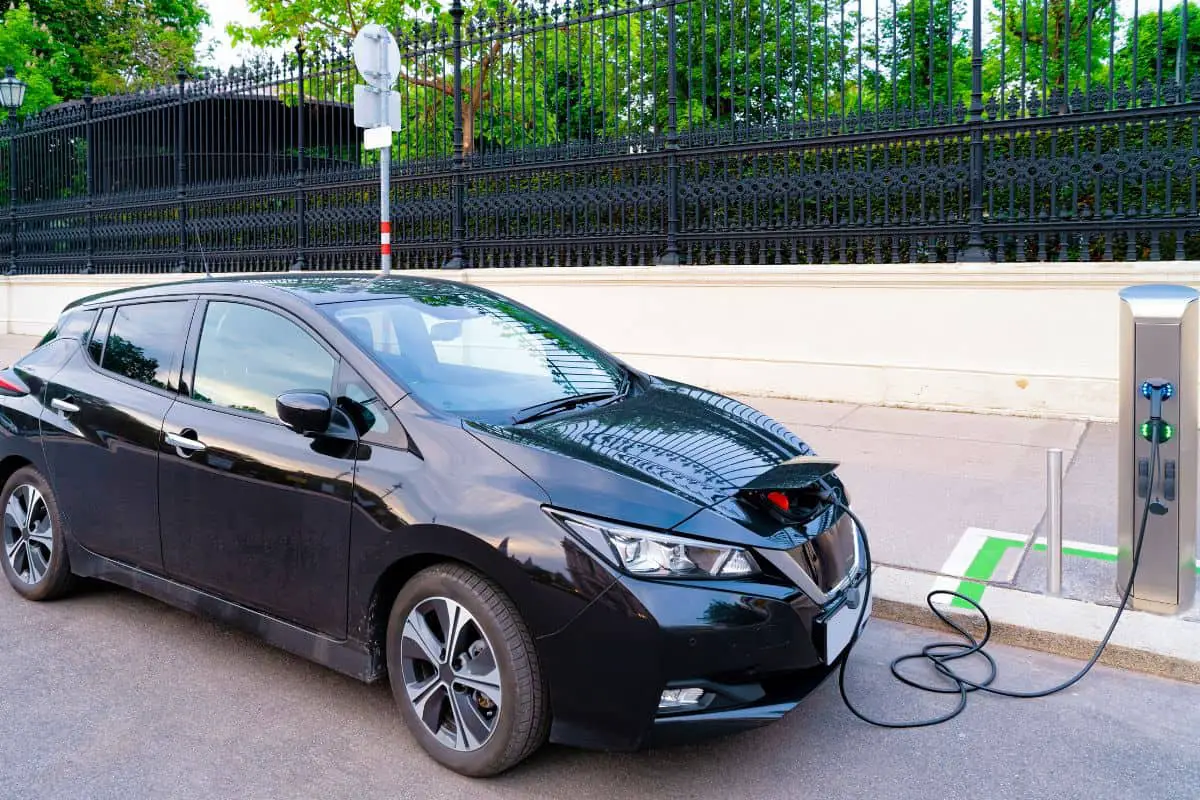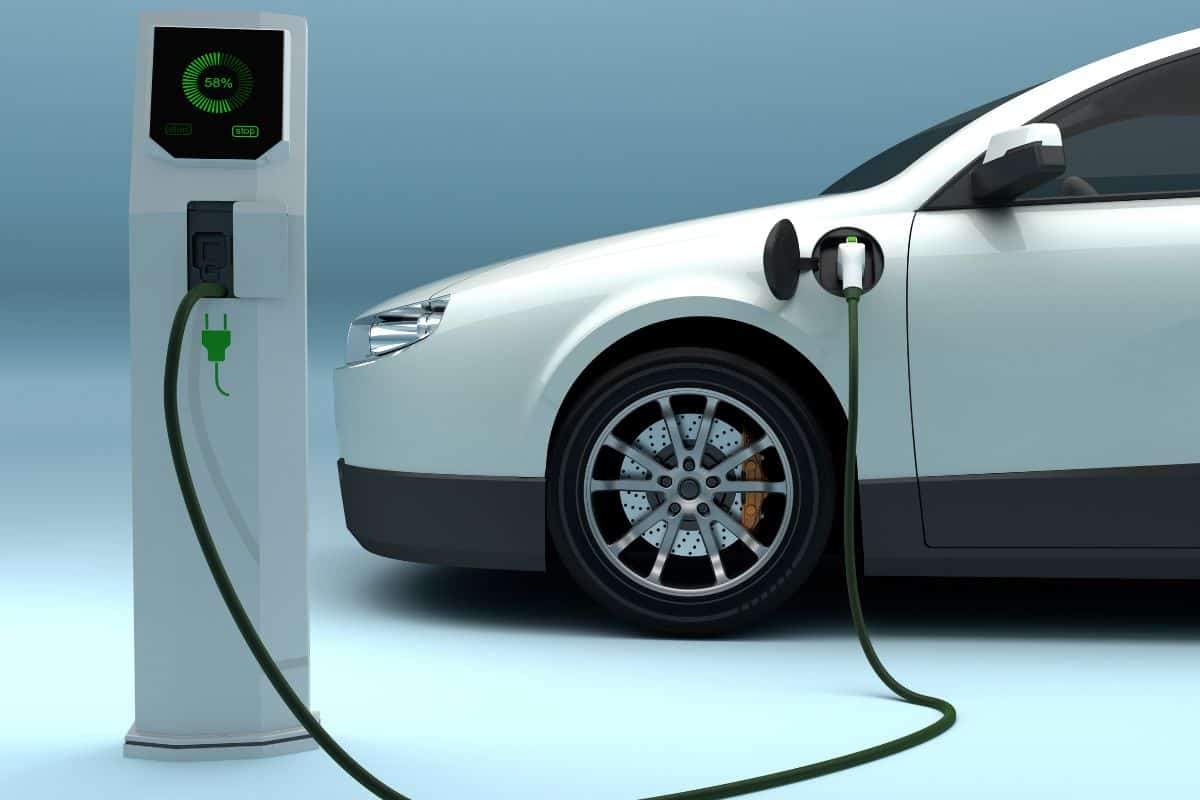Concerns about charging are undoubtedly one of the biggest worries that first-time Electric Car buyers worry about when making the switch from conventional to electric.
People’s first question is often to ask what voltage is required to charge an electric vehicle (EV).
However, you also need to consider the amps, or amperage, when charging your EV, too.
This is one of the most important aspects of charging an electric car, and you need to make sure that you are always charging your EV at the amperage that the vehicle is optimized for.
Most cars can be charged at 32 amps, or you can use a faster charging station that will give you 50 amps.

If these are concerns that you’ve ever had yourself, then you’re in the right place!
In this article, I’ll be talking about the amperage required to charge your electric car. First of all, I’ll briefly explain what amperes, or amps for short, are.
Recommended reading: My in-depth guide to how electric cars work written in plain English.
What Are Amps?
Amps are a unit of electrical current. Electrical current is the rate at which the electrons in the electricity flow through a conductor.
Think of it like water flow; the electrical current is equivalent to, say, the amount of water flowing through a sluice gate on a stream.
As amps are the unit used to measure electric current, the greater the amps, the greater the current, or flow rate, of the electricity.
Therefore, when it comes to charging, amps are actually pretty important.
The greater the amps, the faster you’ll be able to charge your EV, and the quicker you’ll be able to get back on the road.
How Many Amps Are Necessary To Charge An EV?
Generally speaking, you will need at least 15 amps to charge an electric car.
However, most EVs are designed to support a significantly higher than that, and with good reason.
Charging with just 15 amps of current will take a long, long time.
Sure, it depends on other factors like the voltage of the outlet you are using, too, but it will probably take you days.
Most EVs are designed to be charged at home with anywhere between 30 and 40 amps, which will considerably speed up charge times.
The best way to ensure that you are getting as many amps as possible when charging your electric car is to use the charging equipment that came with the vehicle, as that is optimized for charging your EV.
Will More Amps Charge My EV Faster?

As we just alluded to, each car is designed to charge best at certain levels of amps.
For example, a typical electric car is optimized to charge anywhere between 16 and 32 amps when using a level 2 charging station.
If you’re not sure what a level 2 charging station is, here’s a brief summary.
Level 2 charging stations are the kind most often used in public EV charging locations, like gas stations.
They differ in two important ways from the electricity you’ll be able to access at home, using direct current rather than alternating current, and operating at 240 volts rather than 120 volts.
As a result, your car ought to charge much quicker at these stations than at home.
However, much of the increased charging speed is little to do with the amps themselves, as most cars can only benefit from increased amperage up to the number of amps they were designed to cope with.
For example, charging an electric car rated at 30 amps with a 40 amp charger won’t necessarily make your EV charge 33% faster, as you might expect.
Some electric cars simply weren’t designed to deal with that level of electrical current.
The car is likely to charge a little faster, but the difference will be negligible.
In fact, several of the most popular electric cars in America take just as long, give or take a few minutes, to charge from 0 % to 100% using a 40 amp charger as a 30 amp charger.
The Chevrolet Bolt, for example, still takes just over eight hours to charge regardless of whether you use a 30 amp charger or a 40 amp charger. Why?
Because, like many vehicles, it was not designed to take advantage of an increase in current.
Of all the electric car brands in America, Tesla cars are best equipped to take advantage of higher amperage rates.
The Tesla Model Roadster, for example, sees its charging time cut down to 5.8 hours from 7.8 hours when using a 40 amp current instead of 30 amps.
Can You Have Too Many Amps?
The main mistake an EV owner can make is not making the most of a vehicle’s amperage rating and using fewer amps to charge it than it was optimized to handle.
Charging your 32 amp-rated EV with just 16 amps is naturally going to take twice as long as it would with a 30 amp charger, for example.
Having said that, there are dangers associated with using chargers with higher amp ratings than is recommended for your vehicle.
Level 3 chargers, for example, often known as fast chargers, can use as many as 500 amps.
This sounds great, as they can charge your car up to 80% in as little as 20 minutes, but there is a catch.
Charging your battery at this rate can actually be detrimental to the battery in the long run, as it will decrease your battery’s life expectancy the more often you do it.
So, whilst extremely high amp chargers might be useful in a pinch, you don’t want to charge that way too often.
What Amperage Charger Should I Use At Home?
The best thing to do is to check what amperage your car is optimized to charge with and install a charger with that amp rating.
For example, if you own a Tesla you might look into installing a 40 amp charger, although this will require the installation of a 50 amp circuit breaker, which can add to installation costs.
Generally, a safe bet would be to opt for a 30/32 amp charger.
When plugged into a 120 volt, alternating current outlet at home this should add about 25 miles of range for each hour of charge.
Charge your car overnight and by the next morning, your car will be fully charged.
Final Thoughts
And that brings us to the conclusion of the article. I hope that you’ve learnt all you need to know about amps when it comes to charging electric cars.
As a general rule, remember wherever possible to charge your car using the amperage it was optimized for!
- Tesla Charger Installation Cost (Home Setups) - March 1, 2024
- Tesla Phone Key Disconnected (Troubleshooting Guide and Quick Fixes) - March 1, 2024
- Tesla FSD 12 (Explained) - March 1, 2024